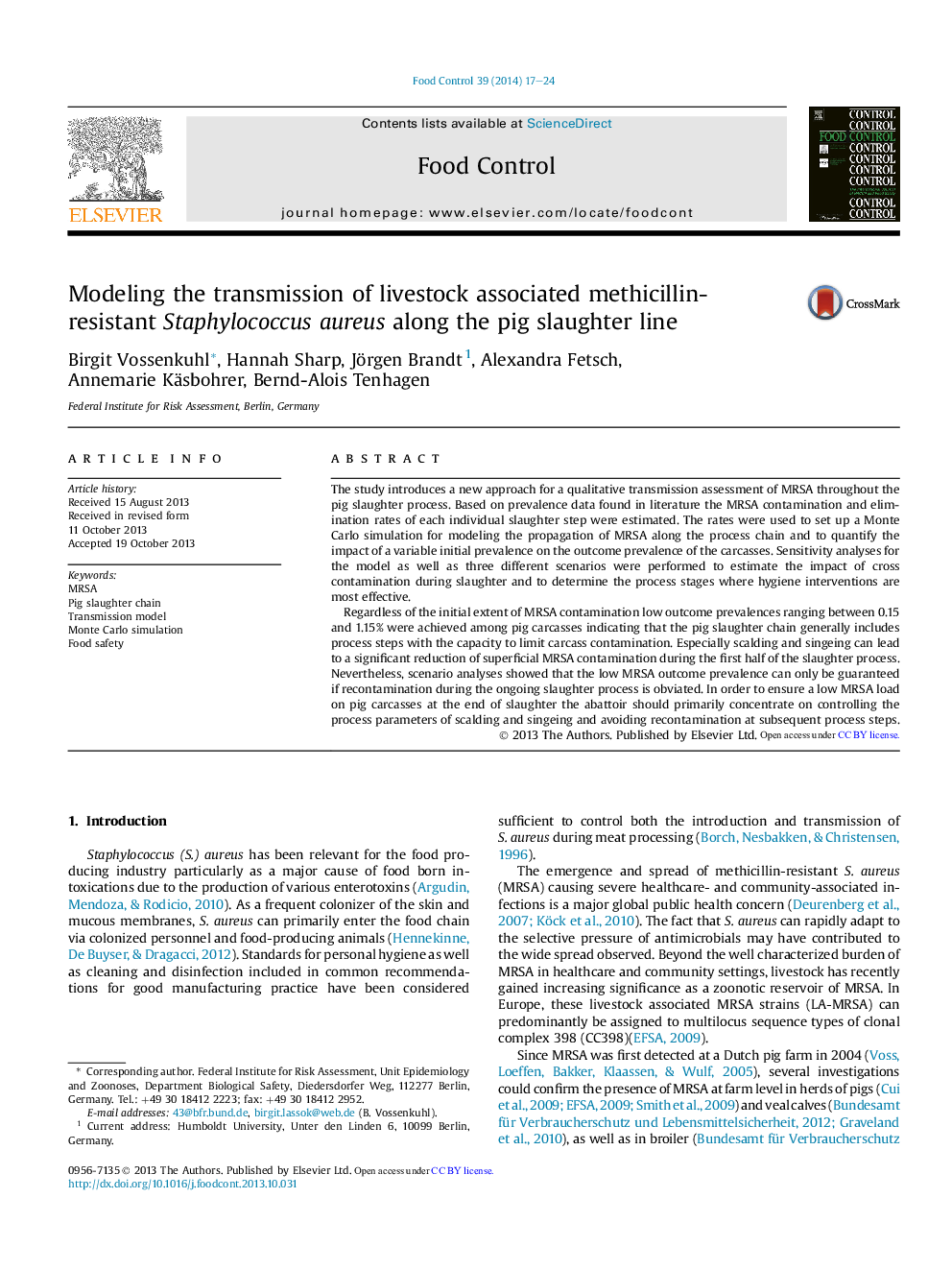| کد مقاله | کد نشریه | سال انتشار | مقاله انگلیسی | نسخه تمام متن |
|---|---|---|---|---|
| 6391960 | 1628423 | 2014 | 8 صفحه PDF | دانلود رایگان |

- MRSA transmission during pig slaughter can be analyzed using a probabilistic model.
- Slaughter process has the capacity to reduce superficial MRSA contamination of pigs.
- Scalding and singeing are critical processes for superficial MRSA decontamination.
- Polishing is a critical processes for carcass recontamination with MRSA.
- More prevalence data are needed for improved representativeness of model parameters.
The study introduces a new approach for a qualitative transmission assessment of MRSA throughout the pig slaughter process. Based on prevalence data found in literature the MRSA contamination and elimination rates of each individual slaughter step were estimated. The rates were used to set up a Monte Carlo simulation for modeling the propagation of MRSA along the process chain and to quantify the impact of a variable initial prevalence on the outcome prevalence of the carcasses. Sensitivity analyses for the model as well as three different scenarios were performed to estimate the impact of cross contamination during slaughter and to determine the process stages where hygiene interventions are most effective.Regardless of the initial extent of MRSA contamination low outcome prevalences ranging between 0.15 and 1.15% were achieved among pig carcasses indicating that the pig slaughter chain generally includes process steps with the capacity to limit carcass contamination. Especially scalding and singeing can lead to a significant reduction of superficial MRSA contamination during the first half of the slaughter process. Nevertheless, scenario analyses showed that the low MRSA outcome prevalence can only be guaranteed if recontamination during the ongoing slaughter process is obviated. In order to ensure a low MRSA load on pig carcasses at the end of slaughter the abattoir should primarily concentrate on controlling the process parameters of scalding and singeing and avoiding recontamination at subsequent process steps.
Journal: Food Control - Volume 39, May 2014, Pages 17-24